Related Research Articles

The Catalina 30 is a series of American sailboats, that were designed by Frank Butler and later by Gerry Douglas.

The US Yachts US 22 is an American trailerable sailboat, that was designed by Gary Mull and first built in 1979.
The Triton 22 is an American trailerable sailboat, that was designed by Gary Mull and first built in 1985. The design is out of production.
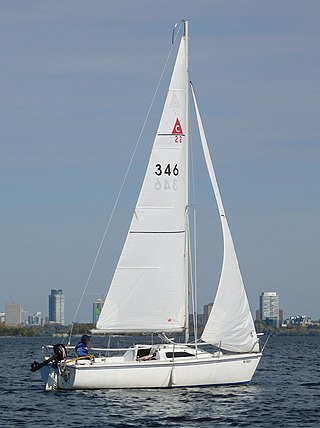
The Capri 22 is an American trailerable sailboat, that was designed by Gary Mull and Frank Butler and first built in 1984.
The Triton 25, also called the Pearson 25, is an American trailerable sailboat, that was designed by Gary Mull and first built in 1984. The design is out of production.
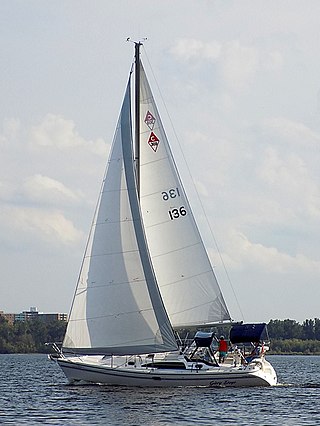
The Catalina 309 is an American sailboat, that was designed by Gerry Douglas and first built in 2005.
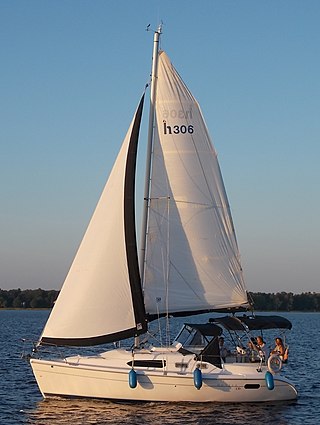
The Hunter 306 is an American sailboat design, that was introduced in 2001.

The Mirage 25 is a Canadian sailboat that was designed by American Robert Perry and first built in 1982.

The Mirage 30 is a Canadian sailboat, that was designed by American Robert Perry and first built in 1983. The design is out of production.
The Redline 41 is a series of sailboat designs, first built in 1967 and that remained in production in 2017. The first two designs were by Cuthbertson & Cassian and the more recent one by Mark Mills.
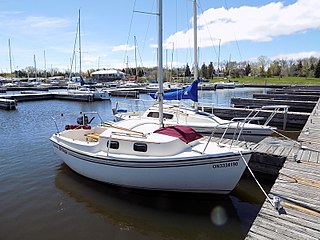
The Sanibel 18 is an American trailerable sailboat, that was designed by Charles Ludwig, first built in 1982 and named for the Floridian town and island.
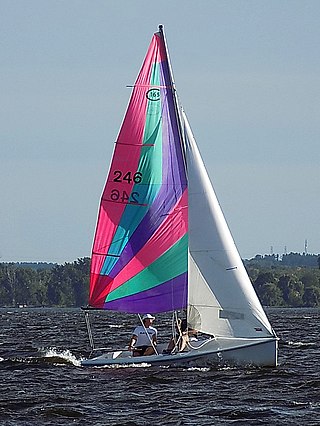
The Catalina 16.5 is a series of American sailboats, that was designed by the Catalina Design Team and first built in 1994.
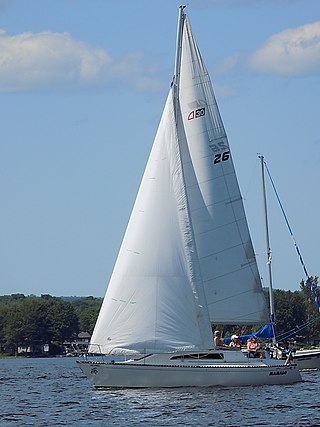
The Aloha 30 is a Canadian sailboat, that was designed by Ron Holland and first built in 1986.

The Hunter 27 is a series of American sailboats, that were first built in 1974.

The Edel 665 is a French sailboat, that was designed by Maurice Edel and first built in 1984. It was marketed as the Edel 660 in France and is sometimes referred to as the Edel 6.
The Hunter 30T is an American sailboat that was first built in 1991.
The Hunter 22 is an American trailerable sailboat that was designed by the Hunter Design Team and first built in 1981.
The Marlow-Hunter 22 is an American trailerable sailboat that was designed by Glenn Henderson as daysailer and racer, first built in 2010. It is a development of the 2003 Hunter 216, but with the hull built of fiberglass, instead of thermo-plastic
The Pearson Electra is an American trailerable sailboat that was designed by Carl Alberg as a Midget Ocean Racing Club (MORC) racer and first built in 1960.
The Typhoon 18 is a family of American trailerable sailboats that was designed by Carl Alberg as day sailers and cruisers, first built in 1967.
References
- 1 2 3 4 5 6 7 Browning, Randy (2019). "Triton (Pearson) sailboat specifications and details". sailboatdata.com. Archived from the original on 9 April 2022. Retrieved 12 April 2019.
- ↑ McArthur, Bruce (2022). "Carl Alberg". sailboatdata.com. Archived from the original on 21 October 2020. Retrieved 9 April 2022.
- 1 2 3 4 5 6 7 Sherwood, Richard M.: A Field Guide to Sailboats of North America, Second Edition, pages 202-203. Houghton Mifflin Company, 1994. ISBN 0-395-65239-1
- 1 2 3 4 5 Rosiemac (9 December 2012). "Pearson Triton 28". Blue Water Boats. Archived from the original on 14 April 2013. Retrieved 12 April 2019.
- ↑ McArthur, Bruce (2022). "Pearson Yachts". sailboatdata.com. Archived from the original on 28 November 2020. Retrieved 9 April 2022.
- ↑ Sail America. "Triton". www.sailamerica.com. Archived from the original on 12 February 2013. Retrieved 24 October 2018.
- ↑ Browning, Randy (2019). "Triton (Pearson) Yawl sailboat specifications and details". sailboatdata.com. Archived from the original on 9 April 2022. Retrieved 12 April 2019.
- ↑ Browning, Randy (2019). "Triton (Aeromarine) sailboat specifications and details". sailboatdata.com. Archived from the original on 9 April 2022. Retrieved 12 April 2019.
- ↑ Browning, Randy (2019). "Triton (Jouët) sailboat specifications and details". sailboatdata.com. Archived from the original on 9 April 2022. Retrieved 12 April 2019.